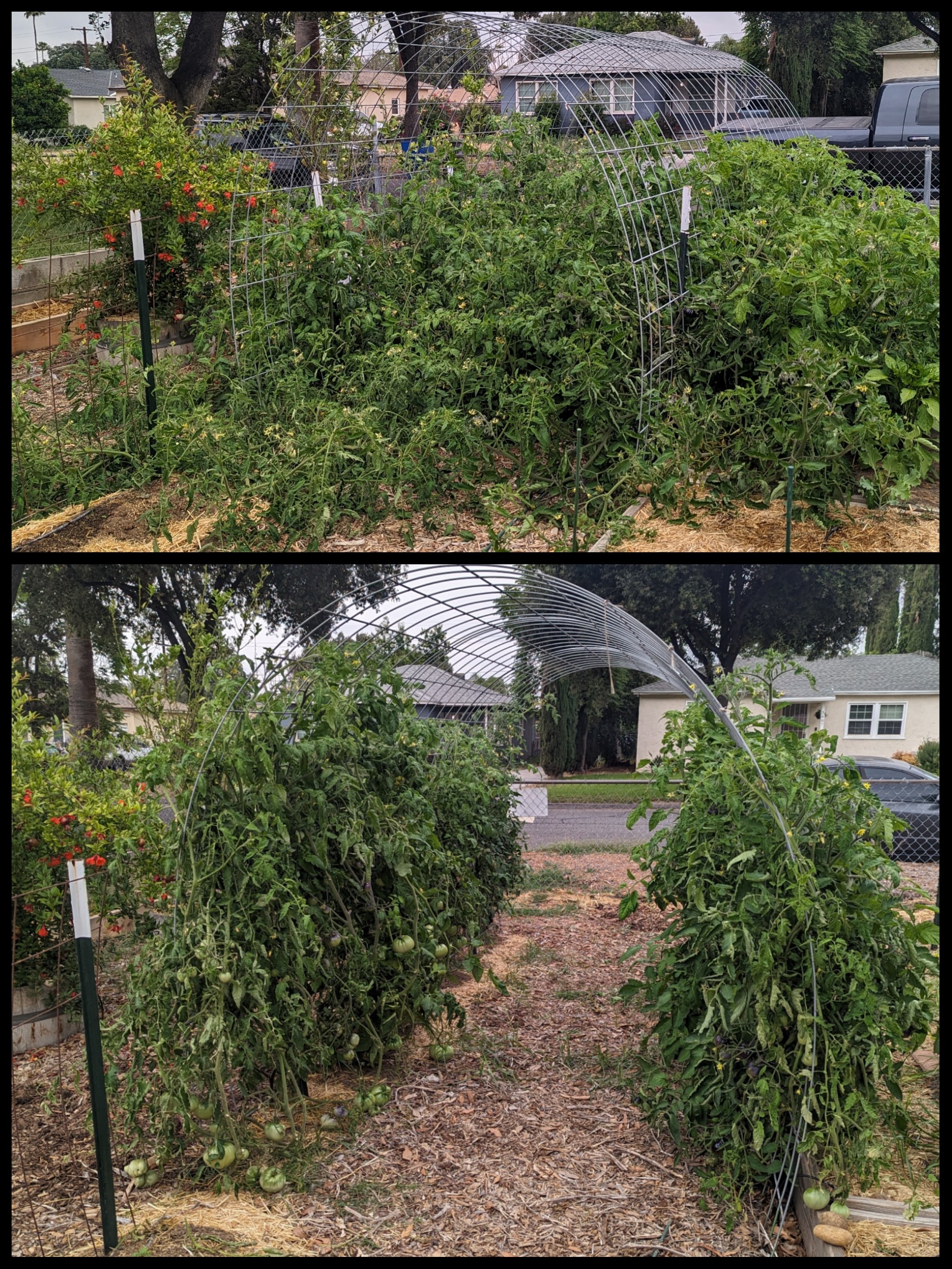thrawn
Just a rock-licker who loves all things sci-fi, boardgames, and growing my own food, especially heirloom tomatoes.
- 18 Posts
- 31 Comments

 3·2 months ago
3·2 months agoYeah… the thought has crossed my mind, even though tomatoes are my absolute favorite thing to grow. If I knew for sure it’d really reduce the population, I could probably convince myself, but how sad would it be to have a tomatoless year just to have the mites back in full force the next. 😕

 3·2 months ago
3·2 months agoHard to judge, as not one of my next door neighbors is interested in gardening, despite my efforts at offering seeds/seedlings/help.
I haven’t gotten to really connect with any gardening groups in my area, but the handful of folks I have talked to also have problems with spider mites, though not sure if to quite such a severe degree.

 2·2 months ago
2·2 months agoThat’s a fair point, didn’t consider that my generalists would probably also be happy snacking on my good guys. I released them along with the G. occidentalis back in May when it was much cooler, in the hopes of preempting the spider mite spread.
The N. californicus I released in mid June, and though I didn’t happen to grow any corn in the garden this year, hopefully the volume of spider mites is enough to keep them well fed.

 5·2 months ago
5·2 months agoYep, I’ve tried various soaps and all kinds of oils, tried regularly spraying down the leaves to keep them dust free and the humidity up, tried removing plants at the first sign of infestation, all of it seemingly futile under the literal avalanche of mites I get every summer. If I miss a few days of these preventative measures, my poor tomatoes will have leaves gone from a slight sign of damage to a fully webbed death. And it’s not like my plants are water starved either, I use drip irrigation under thick mulch, so the soil stays moist even on the hottest days.
It’s been really constraining on my growing season. I’m often able to get plants in the ground around mid-February and get a good harvest in May, but June/July is spent just watching all my plants die a lingering infested death. I’m in 10a, so I should easily be able to get a second summer crop in, but new seedlings planted at the end of spring seem to fare even worse than their established brethren. Hence why I’ve finally decided to spend the $$$ on predators, really hoping that their population establishes and tames the micro menace.

 4·2 months ago
4·2 months agoYeah, would be nice if I were in a closed environment and could keep them from running away!
I’ve tried neoseiulus californicus and galendromus occidentalis, and also zelus renardii as a generalist predator. I’ve considered stethorus punctillum, might have to give them a shot too.

 10·2 months ago
10·2 months agoDon’t know the range of those wasps, but I’m in inland southern California, and I don’t think I’ve ever spotted a worm with them. Kinda glad of that tbh, the whole idea gives me the heebie geebies.

 15·2 months ago
15·2 months agoI wish that they were the biggest problem bug for my tomatoes, but that title goes to the godforsaken spider mites. They decimate my plants every summer as soon as the weather turns hot, and I’ve tried so many things to combat them.
This year I’ve applied a couple rounds of predator mites, and in addition to some ruthless pruning of affected plants, I feel like I’m actually holding ground in the battle. Though really hoping that the predator mites will establish a population, as they’re a pricy solution.

 13·2 months ago
13·2 months agoI usually put them out on my driveway and it doesn’t take long before a bird spots my tasty snack offering. Someday I’d love to have chickens to give them to instead.
I completely agree. Every so often I get an itch to have a look at Reddit, and though the niche subs still seem alright, the comments of anything near the front page are beleaguered with low-quality jokes and karma grabs.
God forbid you’re actually interested in discussing the subject, any comment that takes more than a few seconds to write or read gets buried under a thousand others like your first examples.

 4·4 months ago
4·4 months agoIt’s like Final Destination with children.
I think that’s a fantastic description for Willy Wonka. I remember as a kid watching the boat ride scene and thinking “is Mom sure this is a kid’s movie‽”

 2·11 months ago
2·11 months agoI’d say generally sweeter, but depending on how much water they’re given, I’ve had a few get much hotter than what you usually expect from a poblano.

 1·11 months ago
1·11 months agoHah, knew someone would call semantics. Though with what’s ripe on the 20 or so pepper plants in my garden, I probably could go pick myself a proper peck!

 5·11 months ago
5·11 months agoI got it from this shop on Etsy, but it looks like they’re out of stock :(

 60·1 year ago
60·1 year agoThey’re also at the lowest drainage point for that whole valley. Plus, the properties of the lakebed make it so that water is very slow to soak into the ground, so it’s going to take a while for things to dry out.

 6·1 year ago
6·1 year agoThat was my first thought, but I think the legend is just wrong, as I don’t see that second red next to the blue anywhere.
I grow pretty much everything from seed because it’s crazy cheaper (after some upfront costs). For the price of one or maybe a few seedlings, you can buy seed packets with hundreds of seeds. Seeds also make trying out unique plants possible, as often times nurseries don’t carry a wide variety to choose from.
Depending on the zone you’re in yes. I’m in 9b and rarely get freezing temperatures, so I can grow things over winter that might not survive in colder areas. Some brassicas are especially frost tolerant, so it would be worth looking into and seeing what you can grow in your area.
 1·1 year ago
1·1 year agoMy fiance and I eat out about once a week, and we often choose local places where we know we’ll get 4 meals off of a $15 platter of food. It’s certainly not as cheap as cooking at home, but sometimes you want a giant pile of orange chicken, and not the bother of prep/cleanup.
You sure can walk through it, it’s tall enough my 6’ fiance fits standing underneath. We usually only barely kiss freezing a few times in the winter, so I haven’t bothered to use it to try to keep things warmer. I weave tomatoes over it in the summer and peas in the winter.
I need to take an updated photo (the arch is fully covered now), but here’s a before/after of pruning and weaving this year’s tomatoes on it after they went wild when I was on vacation in May:



First time ever growing radicchio, but I’m 100% keeping it in my garden from here on out, not for eating (actually was not a fan of the flavor), but because it seems to want to bloom eternally. I swear this one plant has been blooming every morning for months now, and I’ve never seen sweat bees in such numbers, they seem to especially love these blossoms.